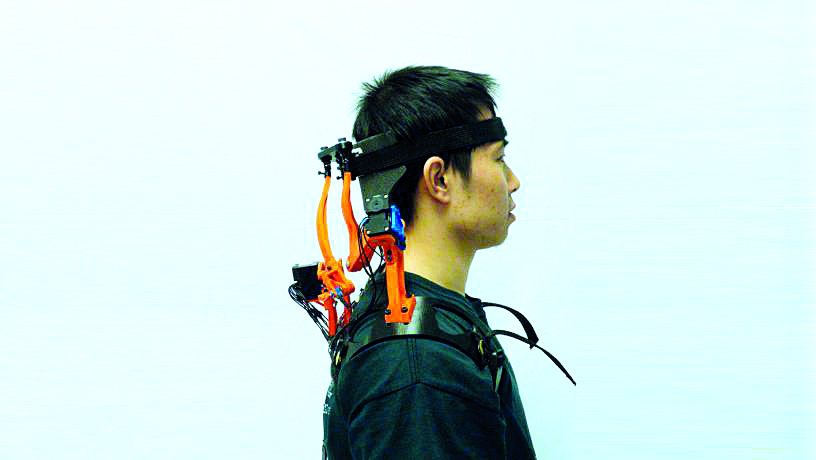
Columbia University researchers have designed a novel robotic brace that supports the neck during its natural motion and dramatically assists ALS patients in holding their heads up and actively supporting them during a variety of range of motion tasks.
Researchers say the device would help improve patients’ quality of life, not only in improving eye contact during conversations, but also in facilitating the use of eyes as a joystick to control movements on a computer, much like scientist Stephen Hawking.
The brace, designed by a team of engineers and neurologists, incorporates both sensors and controls for adjusting the head posture, restoring roughly 70% of the active range its of motion.
Commonly known as Lou Gehrig’s disease, ALS is a neurodegenerative illness characterized by progressive loss of muscle function, leading to paralysis of the limbs and respiratory failure. Dropped head, due to declining neck muscle strength, is common as the disease progresses, along with eventual complete loss of mobility of the head, leading to a chin-on-chest posture that impairs speech, breathing and swallowing. Current static neck braces become increasingly uncomfortable and ineffective as the disease progresses, said Hiroshi Mitsumoto, Ph.D., professor of neurology at Columbia University and study co-author.
“Although we cannot cure the disease at this time, we can improve the patient’s quality of life by easing difficult symptoms with the robotic neck brace,” he said.
To test the device, researchers recruited 11 ALS patients and 10 healthy, age-matched subjects. Participants performed single-plane motions of the head and neck including flexion-extension, lateral bending and axial rotation.
The study also showed that the device can serve as a diagnostic tool for impaired motion of the head and neck.
Findings were published in Annals of Clinical and Translational Neurology.
From the October 2019 Issue of McKnight's Long-Term Care News




